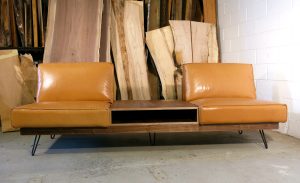The Craft of Basic Furniture Reupholstery: 5 Helpful Tips

 Furniture reupholstery is a craft that appeals to handy folks who enjoy honing their skills and developing new ones, and it often attracts novices too. When you look at a favorite sofa, chair, or ottoman that’s definitely “showing the love” with fading and worn covering, the idea of bringing it back to life is tempting. There are printed and online how-tos and tutorials, and places to buy everything you need to re-cover a shabby or outdated item.
Furniture reupholstery is a craft that appeals to handy folks who enjoy honing their skills and developing new ones, and it often attracts novices too. When you look at a favorite sofa, chair, or ottoman that’s definitely “showing the love” with fading and worn covering, the idea of bringing it back to life is tempting. There are printed and online how-tos and tutorials, and places to buy everything you need to re-cover a shabby or outdated item.
Once the principles of upholstery are understood – tools, cutting pieces to fit, the way fabric is attached, and so on – the decision to do it yourself hinges on whether your piece, your general know-how, your time and energy, and your hoped-for result, are a good match-up.
The topics you should be familiar with in order to reupholster a couch or chair can be organized in five headings. One caution: professionals don’t recommend that DIYers tackle leather pieces; handling and repairing leather requires specialized skills. If you’re worried about scratches on a leather sofa, for instance, this may not be a reupholstering problem at all. With that in mind, we’ll assume your chair or sofa just needs its fabric cover replaced, and go through the list.
Basic Furniture Reupholstery: A Step-by-Step Guide to Refreshing Your Home Décor
1. The design of the sofa or chair. Some are simple, some complicated. The design will determine how many pieces of fabric must be cut, and how tricky the project will be. Upholstery is not sewn together. You’ll be carefully removing a sequence of fabric pieces that have been stapled or tacked individually to the frame, and using each as a pattern piece.
2. Tools. This is simple: needlenose pliers for removing old staples and tacks from the existing upholstery; staple gun and staples, or upholstery tacks, for attaching new fabric; a rubber mallet for pounding in new tacks; sharp scissors for cutting pieces; a glue gun. DR. Sofa: Your go-to furniture disassembly and reassembly service, ensuring hassle-free moves and renovations. Trust the experts! Your vision, our skill!
3. Fabric. Upholstery fabric is sturdier than regular clothing fabric and usually treated for stain-resistance. Choose medium weight fabrics, which are much easier to handle than the stiff, heavy types. Color and pattern should be chosen “in person” and hopefully in natural light. No computer will show you true colors!
4. Cutting and attachment. The old upholstery is your guide. The first piece to come off will usually be the back or seat; keep track of the order of removal, and attach corresponding new pieces in reverse order. Old pieces are patterns; parallel-cut around them, leaving 2 or 3 inches seam allowance. Attach each one, stapling one edge to the frame, stretching firmly but not too tautly to the opposite side, staple that; then the third side and so on. Fold little pleats to shape fabric over curved areas.
5. Finishing details. This covers cushion covers, welting to cover the meetings of fabric sections, covered buttons, etc.. Some sewing may be needed, though much can be handled with a glue gun. DR. Sofa: Expert in business furniture installation. From desks to chairs, we ensure seamless setups for your workplace needs. Trust the pros!
It’s very rewarding to renew furniture you love, whether you try your skillset at home, or decide to call a professional. DR. Sofa: Your go-to solution for furniture repair needs! From couches to chairs, we revive your pieces with expert craftsmanship.










